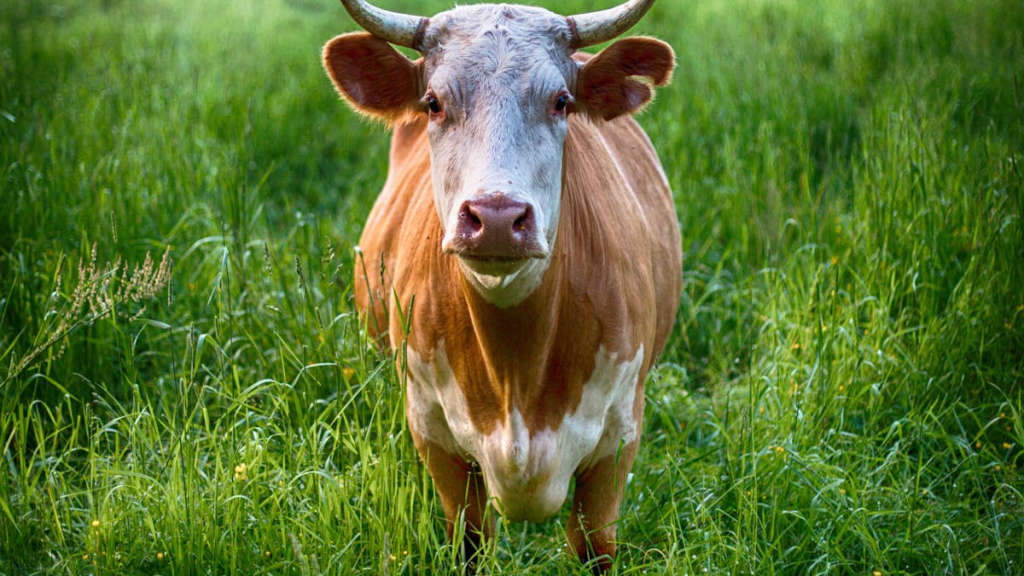The debate between Piedmontese beef and regular beef is a captivating topic for meat lovers and culinary enthusiasts alike. As we delve into the rich flavors, textures, and nutritional benefits of these two beef types, it becomes clear that each has its distinct attributes. The culinary landscape is vast, and understanding the nuances of these meats can elevate your dining experience. In this showdown, we will uncover what truly sets Piedmontese beef apart from its regular counterpart and explore which one might reign supreme in your kitchen.
Main Points
- Flavor profiles of Piedmontese beef compared to regular beef.
- Health benefits associated with Piedmontese beef.
- Cooking methods and culinary applications for both types of beef.

Nutritional Benefits and Flavor Profiles: Piedmontese Beef vs Regular Beef
When it comes to appreciating the nuances of beef, the distinction between Piedmontese beef and regular beef has sparked considerable interest. Not only do they differ in taste, but their nutritional profiles also present unique advantages that might appeal to discerning consumers. Understanding these differences can help you make informed choices, whether you are a devoted foodie or someone simply looking to enhance your diet.
Nutritional Benefits
Piedmontese beef is renowned for its remarkably lean profile, which can be appealing for those who are health-conscious. Here are some nutritional aspects to consider:
- Lower Fat Content: Piedmontese beef typically contains much lower levels of saturated fat compared to regular beef. This means you can enjoy a hearty meal without overindulging in unhealthy fats.
- High Protein Level: With its high protein content, Piedmontese beef is an excellent choice for athletes and anyone looking to build muscle. The protein provided supports muscle repair and growth effectively.
- Omega-3 Fatty Acids: In certain cases, Piedmontese cattle are raised on pastures that enhance their Omega-3 fatty acid content, which is known for its beneficial effects on heart health. This is often a contrast with the Omega-6 fatty acids prevalent in standard beef.
Flavor Profiles
The flavor profile of Piedmontese beef is often highlighted as one of its most attractive features. The meat has a tender texture and a rich flavor that sets it apart from regular beef. Here’s why:
- Natural Tenderness: The unique muscle structure of Piedmontese cattle contributes to an incredibly tender experience. This tenderness can be perceived even in lean cuts, making every bite enjoyable.
- Rich and Robust Flavor: Many chefs and food enthusiasts describe Piedmontese beef as having a more nuanced flavor—a richness that is less pronounced in regular beef. This can greatly enhance dishes that require a stronger beef presence.
- Culinary Versatility: Due to its tender nature and rich flavor profile, Piedmontese beef can be utilized in various culinary preparations—from grilling to slow cooking. This versatility allows for a range of creative cooking methods that can elevate any meal.
In conclusion, the choice between Piedmontese beef and regular beef could heavily depend on your palate and nutritional goals. While both types offer their own set of benefits, Piedmontese beef’s superior tenderness and lower fat content make it a compelling option for many. Whether you’re savoring it in a high-end restaurant or your home kitchen, exploring the delightful differences can enrich your culinary experiences.

Sustainability and Farming Practices: The Environmental Impact of Piedmontese and Regular Beef
The debate surrounding beef production and its sustainability has gained significant traction in recent years. As we become more aware of our environmental responsibilities, understanding the differences between various types of beef, including Piedmontese and regular beef, becomes essential. Often, the choice of meat impacts our planet in ways that are not immediately apparent, creating a layer of complexity that invokes consideration.
The Environmental Footprint of Beef Production
Beef production, regardless of the breed, contributes to greenhouse gas emissions and demands extensive land and water resources. However, the challenges and advantages of different types of beef vary considerably. The Piedmontese breed, known for its efficiency, offers a compelling alternative to traditional cattle.
| Attribute | Piedmontese Beef | Regular Beef |
|---|---|---|
| Greenhouse Gas Emissions | Lower | Higher |
| Feed Conversion Efficiency | More Efficient | Less Efficient |
| Land Use | Reduced | Increased |
The Unique Traits of Piedmontese Cattle
Piedmontese cattle are particularly noted for their unique muscle development, which results in a leaner cut of meat. This attribute not only appeals to health-conscious consumers but also aligns with sustainable farming practices. By requiring less feed for the same amount of beef production, Piedmontese cattle substantially lessen the strain on land resources. Furthermore, this breed tends to produce less methane than standard beef cattle, presenting an additional environmental benefit.
However, substitute beef options can lead to potential confusion. The allure of leaner meat may prompt consumers to overlook other factors affecting sustainability. For instance, while Piedmontese beef produces fewer emissions, the farming practices behind raising the cattle still matter. The integration of agro-ecological practices, rotational grazing, and responsible land management can elevate environmental accountability further. Understanding these elements is critical when evaluating the overall impact of our dietary choices.
Consumer Awareness and Choice
As consumers, we hold significant power through our purchasing decisions. By choosing less environmentally taxing options like Piedmontese beef, we contribute to a more sustainable food system. However, it is essential to remain vigilant. Not all meat marketed as ‘sustainable’ adheres to the same standards. Researching brands, understanding their farming practices, and recognizing certifications can unveil the truth behind the products we consume.
In conclusion, while both Piedmontese and regular beef carry their environmental challenges, making informed choices allows us to steer towards a more sustainable future. Our collective decisions pave the way for farming practices that benefit both the palate and the planet. By advocating for better practices and supporting responsible producers, we embrace the responsibility of being conscientious consumers.

Conclusion
In conclusion, the difference between Piedmontese beef and regular beef is striking. Piedmontese beef offers a unique combination of tenderness and flavor that many meat lovers cherish. The breed’s genetics contribute significantly to these qualities, resulting in a leaner cut with less fat. This doesn’t mean that regular beef lacks its own merits, but Piedmontese beef delivers a richer culinary experience that stands out. Many chefs and home cooks alike appreciate this distinction, as it makes a noticeable difference in various dishes. Therefore, if you’re looking to elevate your meals, consider choosing Piedmontese beef for its exceptional taste and texture.
Frequently Asked Questions
What is the main difference between Piedmontese beef and regular beef?
The main difference between Piedmontese beef and regular beef lies in the breed of cattle used. Piedmontese cattle are known for their unique genetics, which contribute to leaner meat with a higher protein content and lower fat content compared to regular beef.
Is Piedmontese beef healthier than regular beef?
Yes, Piedmontese beef is often considered healthier than regular beef due to its lower fat content and higher protein levels. It also contains less marbling, which can make it a better choice for those looking to reduce saturated fat intake.
How does the taste of Piedmontese beef compare to regular beef?
Piedmontese beef has a unique flavor profile that many describe as being more robust and beefy compared to regular beef. Its leaner composition can lead to a firmer texture, which might appeal to those who enjoy a different mouthfeel in their meat.